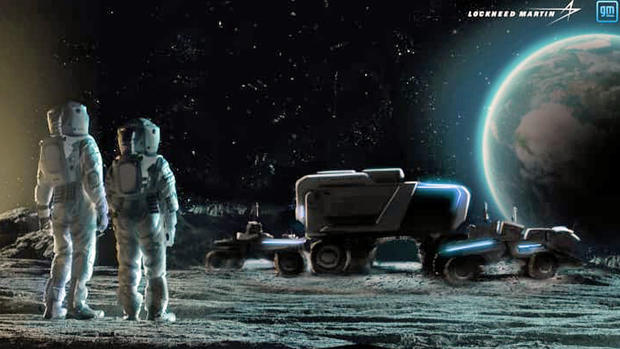Off-Roading On The Moon: NASA To Use New Lockheed Martin-GM Rovers On Upcoming Artemis Missions
(CBSDFW.COM) - Lockheed Martin and General Motors want to ensure astronauts have more range in their 'off-roading' experiences on the Moon.
They have partnered develop a new type of lunar vehicle for NASA to use during its upcoming Artemis missions to the moon, the companies announced on Wednesday.
The Lunar Terrain Vehicle (LTV) will enable astronauts to explore the lunar surface farther than ever before. It's the first of many types of surface mobility vehicles needed for NASA's Artemis program.
The Lockheed Martin-GM rovers would be able to preposition itself autonomously near a landing site prior to the astronauts' arrival, and astronauts would have the ability to task the rover from the Human Landing System or the orbiting lunar Gateway to conduct science operations without a driver. This enables NASA to fit more science into a smaller amount of time, and allows them to uncover the critical information that the other 95% of the lunar surface may hold.
"This alliance brings together powerhouse innovation from both companies to make a transformative class of vehicles," said Rick Ambrose, executive vice president, Lockheed Martin Space. "Surface mobility is critical to enable and sustain long-term exploration of the lunar surface. These next-generation rovers will dramatically extend the range of astronauts as they perform high-priority science investigation on the Moon that will ultimately impact humanity's understanding of our place in the solar system."
Unlike Earth and even Mars, days and nights on the Moon are just under 14 days long. The rovers would be designed to survive and even operate in the two-week long night that sees temperatures of down to -280 degrees Fahrenheit, and day-time temperatures of 260 Fahrenheit.
"The biggest difference is, when you design for the Moon and for space applications, the force of gravity is different and has to be taken into account," said Madhu Raghavan, Global Research & Development Group Manager at GM. "There are extreme temperature swings, and the radiation in space becomes a challenge in terms of systems design. You're also operating in a vacuum and designing your systems to withstand the shock of the actual launch."
Lockheed Martin has a more than 50-year-history of working with NASA on deep-space human and robotic spacecraft, such as NASA's Orion exploration-class spaceship for Artemis and numerous Mars and planetary spacecraft. The aerospace company has built multiple deep space robotic spacecraft that have gone to the Moon, Mars, Jupiter, Venus, asteroids, comets and other destinations throughout the solar system.
"We've led missions to other planetary bodies for decades, building spacecraft that can survive the high radiation environment, cold temperatures, and yet be very light and very reliable," said Kirk Shireman, vice president, Lunar Exploration Campaigns at Lockheed Martin. "This is what we specialize in, and we are more than capable of meeting and exceeding this challenge for NASA."




